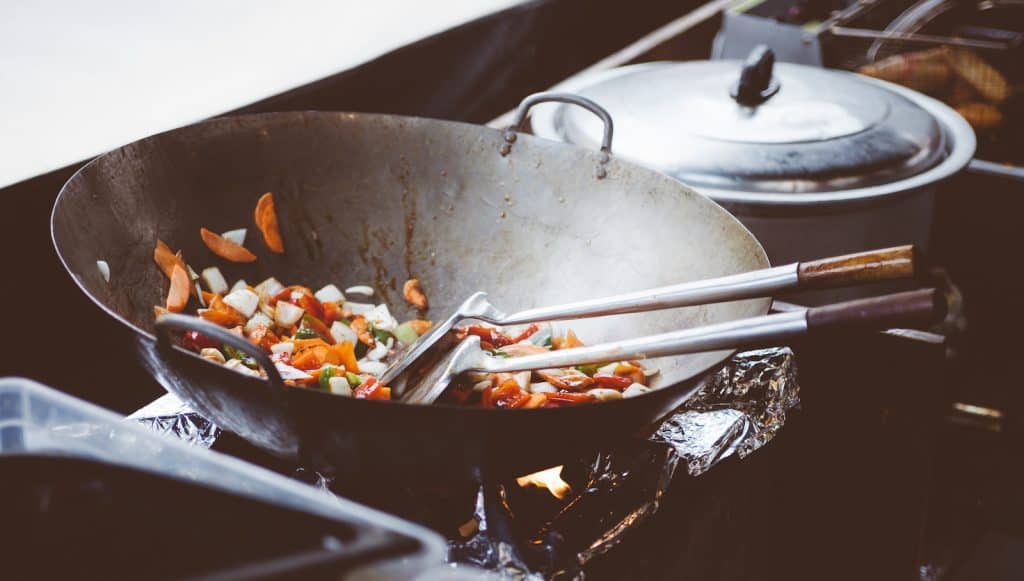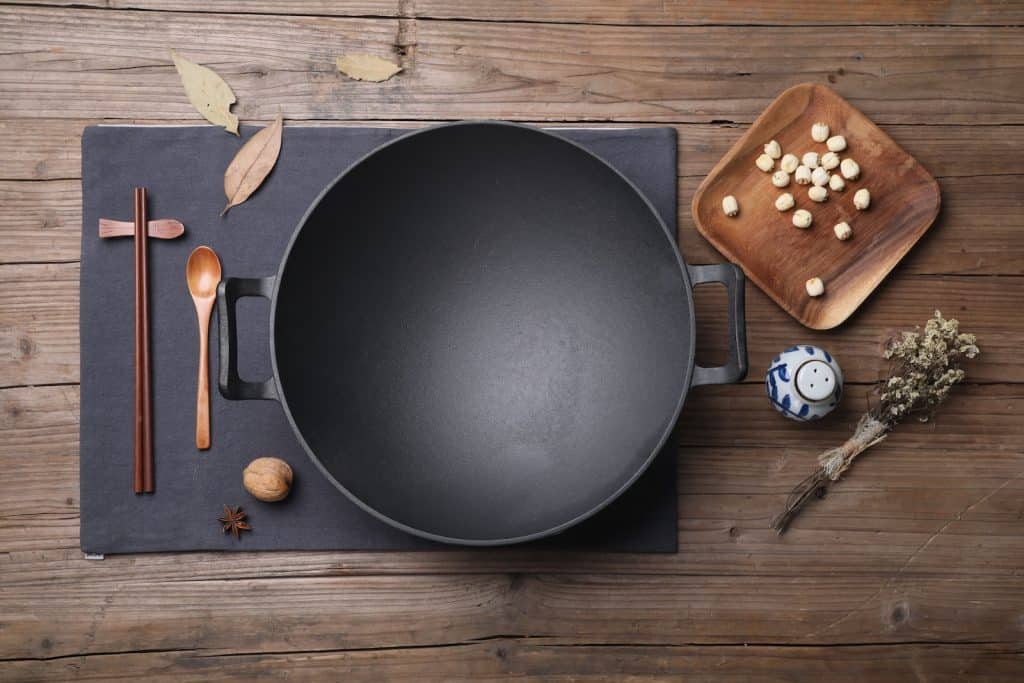Navigating the cooking process with a wok can be just as important as nailing that cherished family recipe. One area often overlooked, yet crucial, is how to clean a wok correctly. Fairly simple, it’s a craft many masters quickly yet offers significant benefits. Ensuring your wok’s longevity and optimal performance, proper care has the added bonus of helping retain that attractive patina it develops over time.
Woks, especially carbon steel wok and cast iron wok, are a boon in the kitchen. A well-seasoned wok gives an added flavor dimension to your dishes. Even when it feels like the aftermath of a storm, with bits of food sticking to your wok, even if they’ve singed onto the surface during a high-heat stir-fry, don’t fret. You can bring your wok back to its shiny glory in no time. And if you’re battling build ups in a rusty wok, the solutions aren’t far off.
From cooling down your hot wok to the repeated seasoning process, using a metal wok spatula, a soft sponge, or even carefully applying steel wool to remove rust, there’s a method to this seeming madness. Soon, you’ll be handling wok care like a seasoned pro, ensuring the implementation is good as new after every cooking session.
Understanding Wok Cleaning Basics

When you purchase a new wok, especially a carbon steel wok, you might be wondering how to clean a wok properly. The first thing to note is that your wok’s overall care will contribute significantly to its longevity, enhancing its non-stick layer and helping you whip up delicious meals with it over the years.
Understanding the difference between a carbon steel wok and a cast iron wok is essential. The primary aspect when it comes to cleaning a wok is knowing the material of the wok. While carbon steel woks are lighter and take less time to heat up, cast iron woks are heavier and take longer to attain hot temperatures but also retain the heat for a longer time.
Cleaning woks involve similar but slightly different processes. For a seasoned wok, quickly rinse your hot wok with warm water after your cooking process is complete. Using a soft sponge or metal wok spatula, gently scrub off any food residues. Then, heat your wok over medium heat until it’s completely dry.
Avoid using mild dish soap or hot soapy water as it can strip the seasoning off a seasoned wok. If the wok has stubborn food residue, you can soak it in hot water for a few minutes before cleaning.
However, if you’re dealing with a rusty wok, you’ll need to apply a more vigorous cleaning method. Arm yourself with a steel wool or scouring pad, and scrub the rust off. Once you’ve removed all the rust, wash it under hot water, dry it thoroughly, and then go through the wok seasoning process again.
In case of a cast iron wok, remember to dry it on low heat until it is thoroughly dry to prevent rust. A thin coating of vegetable oil applied to the wok’s surface with a paper towel can stop any rust from forming in between use.
Remember that the key to maintaining your wok correctly happens after the cleaning. The seasoning process is critical to creating a nonstick surface on your wok. By wiping a thin layer of vegetable oil over the entire wok and placing it on high heat until the oil is smoking, this will burnish the oil onto the metal, creating the nonstick layer. Once the wok is cool, wipe out any excess oil with a paper towel.
Lastly, use carbon steel wok properly and maintain it by cleaning immediately after each use. Avoid leaving the wok in the sink to soak and never use harsh chemicals or rough scrubbing pads. With adequate care, your wok can provide years of cooking enjoyment. Understanding these wok cleaning basics will allow you to cook and clean your wok with confidence.
Remember that a well-cared wok = delicious meals. So, your effort in wok care will always pay off in the long run! Happy cooking!
Step-by-Step Guide on Wok Cleaning
There’s a right and wrong way to clean your wok. These are the steps to keep your wok in tip top shape.
First, you’ll need to determine the material of your wok. The most common types are carbon steel and cast iron. Cast iron woks require a bit more care, so if you work with one, you’ll want to strictly adhere to these steps.
Once the cooking process is complete, allow your wok to cool. Never immerse a hot wok in cold water! This could cause your wok to warp. When it’s cool, rinse the wok with warm water. If there’s food stuck to your wok, use a metal wok spatula or a soft sponge to gently scrub it off.
In cases where a quick rinse isn’t enough, you may need to use hot soapy water. Opt for a mild dish soap and scrub gently with a sponge. Avoid steel wool or scouring pads, as they can damage the seasoned surface of your wok.
After washing, it’s time to dry. Thoroughly towel dry the wok, then place it on low heat on your stovetop to evaporate any remaining moisture.
The next step is essential for a carbon steel wok: the seasoning process. Heat your wok over medium heat and add a thin layer of vegetable oil. Using a paper towel, spread the oil to cover every inch of the wok. Cook for about 10 minutes, then let your wok cool.
If you have a rusty wok, you’ll need to remove the rust first. Scrub gently with steel wool until all the rust is gone. Then, proceed with the regular cleaning and seasoning process. A properly seasoned wok will have a glossy, nonstick surface ideal for cooking delicious meals.
Maintaining the wok after cooking is also key. After each use, rinse and scrub your wok under hot water then dry it on the stovetop. Finally, remember to apply a thin coating of oil. This prevents rust and helps maintain your wok’s seasoned state.
In summary, to clean a wok properly, you’ll need to rinse, scrub, dry, and season. If rust appears, tackling it promptly will keep your wok functioning well. No need to fear – take care of your wok, and it’ll serve up flavor-filled dishes for years to come. Learning how to clean your wok correctly contributes greatly to your cooking experience and the result of your meals. Enjoy your cooking time in a clean, properly maintained wok!
Final Thoughts
Cleaning and maintaining a wok isn’t as challenging as it may appear. By closely following these expert-provided tips and understanding the nuances of wok cleaning basics, anyone can extend the life of their wok without compromising its seasoned surface. After all, the satisfaction derived from cooking with a well-maintained wok and the delicious meals that result is well worth the care and caution. So, next time you use your wok, remember these steps: cool, rinse, scrub, dry, and season. With regular attentive care, your wok will remain a culinary companion for years to come. Happy Wok cooking!
Other suggested articles:


